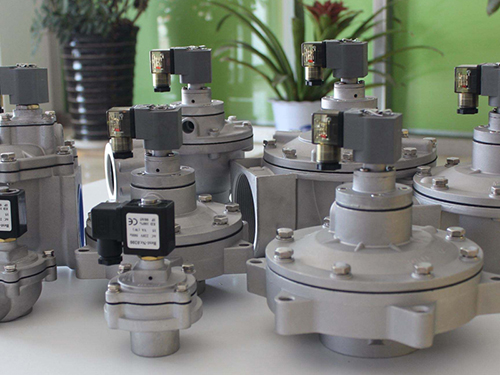SURVIVAL THROUGH QUALITY
PRODUCT CENTER
-
Pulse dust collector
-
Mine dust collector
-
Boiler dust collector
-
Metallurgical dust collector
-
Carbon plant dust collector
-
Chemical dust collector
-
Rubber dust collector
-
Woodworking dust collector
-
Single machine dust collector
-
Static electricity Dust collector
-
Cyclone dust collector
-
Wet dust collector
-
Filter cartridge dust collector
-
Insert valve (gate valve)
-
Ventilation butterfly valve (cold air valve)
-
Spiral conveyor (auger)
-
Scraper conveyor
-
Dust humidifier
-
Bucket elevator
-
Ash discharge valve
-
Material Handling Equipment
-
Wet scrubber
-
Dust collector
-
Dust removal filter bag
-
Dust removal bag cage
-
Polishing platform
-
Waste gas treatment equipment
-
Electric control cabinet
-
Fan
-
Smoke welding machine
-
Liquid level switch
-
Dust removal filter element
-
Aeration cushion
-
Sweeper
-
Dust suppression device
-
Solenoid valve

Submerged electromagnetic pulse valve
The different types and characteristics of submersible electromagnetic pulse valves refer to the dust removal accessories used in pulse dust collectors, which play a very important role in pulse dust collectors. The working principle of electromagnetic pulse valve is to convert electrical pulses into mechanical pulses, releasing the powerful energy of pulsating gas into momentum in a short period of time, generating huge pulses, thereby achieving the purpose of cleaning filter bags. Standard electromagnetic pulse valves are usually made of aluminum alloy die-casting. The appearance has undergone polishing, oxidation, sanding, and black surface treatment. After surface treatment, it has good anti-corrosion performance. The upper part of the electromagnetic pulse valve is equipped with an electromagnetic pilot head, which is composed of high-efficiency magnetic materials and stainless steel magnetic isolation materials. The spring and fasteners are made of stainless steel, and there is a pressure resistant film inside the valve.
1. The diving electromagnetic pulse valve is connected to the airbag through a flange. The air outlet of the electromagnetic pulse valve is located in the middle of the electromagnetic pulse valve, inside the airbag. Then, it extends from the airbag through a wall penetrator or other device and enters the injection chamber for injection.
2. The diving electromagnetic pulse valve is connected to the trachea protruding from the airbag at one end of the pulse valve and to the jet chamber at the other end. The direct electromagnetic pulse valve has no angle, and the inlet and outlet are distributed at both ends of the electromagnetic pulse valve, without angle. The direction of gas flow is displayed on the casing.
3. The installation method of the submersible electromagnetic pulse valve is the same as that of the through electromagnetic pulse valve, except that the inlet and outlet of the right angle electromagnetic pulse valve are 90 degrees, and the flow direction of the gas medium is indicated on the casing.
4. The size of submersible electromagnetic pulse valves is relatively small, generally in the forms of six points, one inch, and one and a half inches. The connection method is the same as that of a right angle electromagnetic pulse valve, with the difference being that the right angle air inlet and outlet have internal buckles, while the right angle quick connect type has external buckles and fastening nuts.

